The Samsung Galaxy Z Fold 6 may fix my biggest issue with the Z Fold 5
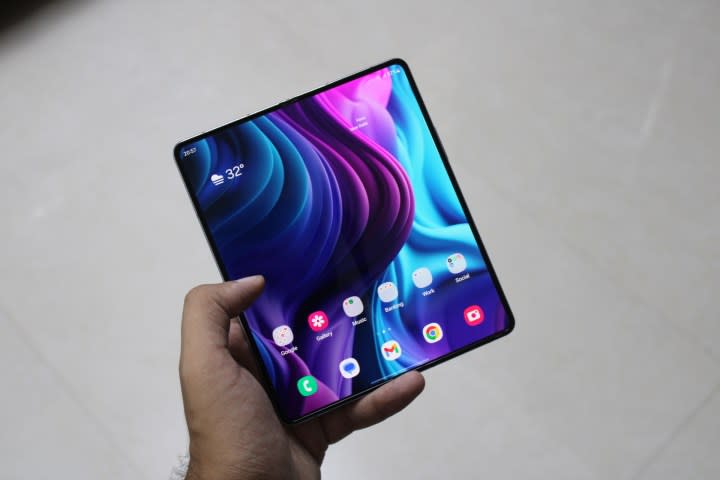
I ordered my first folding smartphone, the Samsung Galaxy Z Fold 5, in February of this year. I was excited, but I was also more than a little apprehensive. This was an entirely new form factor for me, as I’d never used a folding smartphone before. I’d used phones, I’d used tablets, but I’d never used both of them at the same time.
At the start of my experience, I was worried principally about how much I’d use the phone’s headline feature: the big inner display. After all, if I didn’t end up using it, didn’t that defeat the whole point of the device?
Three months on, I’m happy to report that the Galaxy Z Fold 5 is a phenomenal smartphone — and I love the inner display! However, my time with it has highlighted a different problem, which, while not a deal breaker, has been a real pain in the neck. Thankfully, it seems that Samsung already knows this is an issue, as it may be fixing it with the Samsung Galaxy Z Fold 6.
The inner screen is incredible at what it does
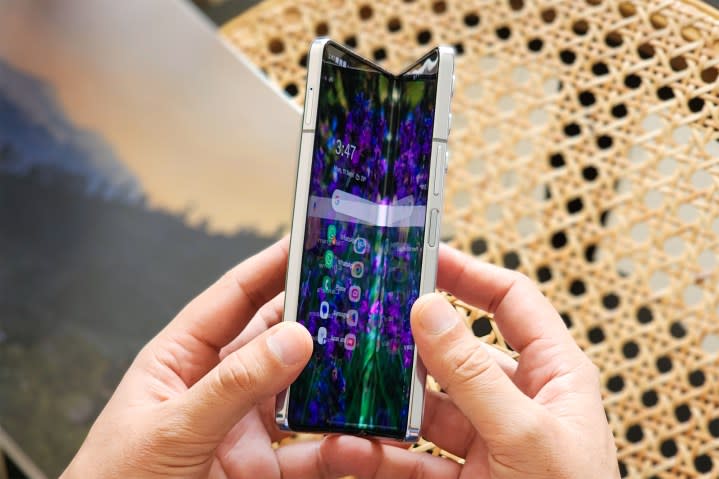
It would be a mistake to say this particular problem cast a pall over my time with the Z Fold 5 — because it didn’t. Samsung’s most powerful foldable smartphone is a technological triumph. It’s powerful, speedy, and has a good battery and a very capable camera. But as you might expect, it’s the inner display that’s the cherry on top of a very tasty cake.
Oddly, after the novelty of the first week, I didn’t use the inner display all that much. The 7.6-inch screen is gorgeous, but as it’s a tablet-sized and -shaped display, it’s more difficult to use than a standard phone screen. Websites and apps are much easier to read, yes, but it’s also much more difficult to control with a single hand. It’s a dual-hand setup, really, and if I’m out and about, then there are relatively few instances where using it unfolded is ideal.
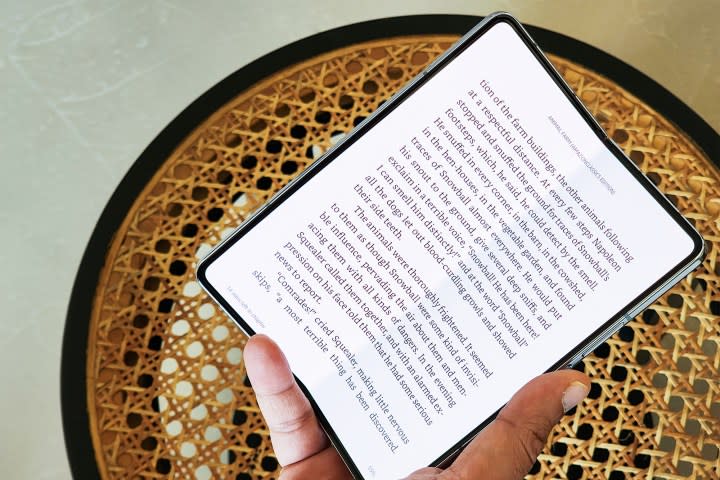
So, I was right to think the Z Fold 5’s inner display was something of a white elephant, right? Well, not really. There’s no better phone for watching videos while doing chores, for instance. Reading manga on the Shonen Jump app is incredible, and I’m not sure how I ever read manga without it. The same applies to e-books, as the Z Fold 5 has threatened to eclipse my Kindle Paperwhite as my go-to e-book reader. It’s also great for showing people photos and videos; open the screen to display a photo, and even people on the other end of a long restaurant table can see it.
Sure, the inner display isn’t a mainstay of my everyday use — but that doesn’t actually matter because that’s not what it’s good for. It’s not what you use for flicking through social media feeds, browsing the internet, or taking pictures. It can be used for those, but it truly excels at reading, watching, and sharing. For me, it being so good when I need it to be is more than enough to keep me happy.
So, if the inner display isn’t a problem, what’s been the issue? Unfortunately, it’s the outer display.
The outer display lacks attention and polish
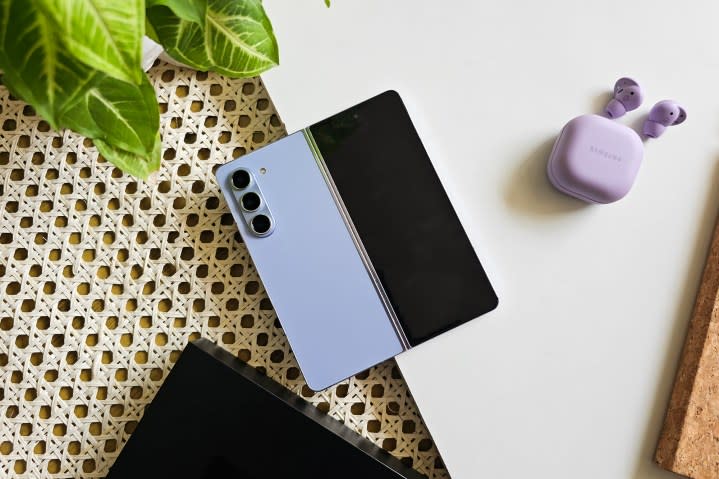
It stands to reason that if I’m not using the inner display, I’m using the outer display. On paper, it’s also great. The 6.2-inch screen has the same Dynamic AMOLED 2X tech as the larger inner display, and it has the same 120Hz refresh rate, too. The 2316 x 904 resolution is sharp and crisp, and it gets more than bright enough, even in strong sunlight.
But the more eagle-eyed among you may have already noticed the oddity: 2316 x 904 is a weird resolution. It comes out to an aspect ratio of 23.1:9, and honestly, it even reads oddly on a spec sheet. It’s narrow. It’s too narrow. And I could live with this narrowness if it didn’t make the display erratic and inconsistent.
Using Twitter (or X, if you must) showed it at its worst. Hitting the like button was akin to spinning a roulette wheel, and I could never tell whether I would actually like the tweet in question or open a new page. In short, I was missing the like button an awful lot, and missing it would dump me out of my feed and into the tweet itself — which isn’t where I wanted it to be. Sure, this wasn’t a huge problem, but it was annoying, especially when I disperse my reactions like candy on Halloween. Missing buttons on Twitter has never been an issue before, and I can only assume the narrower screen is to blame. There were other apps where this problem cropped up, too, but I spend far too much time on Twitter, so it’s there I noticed it most often.
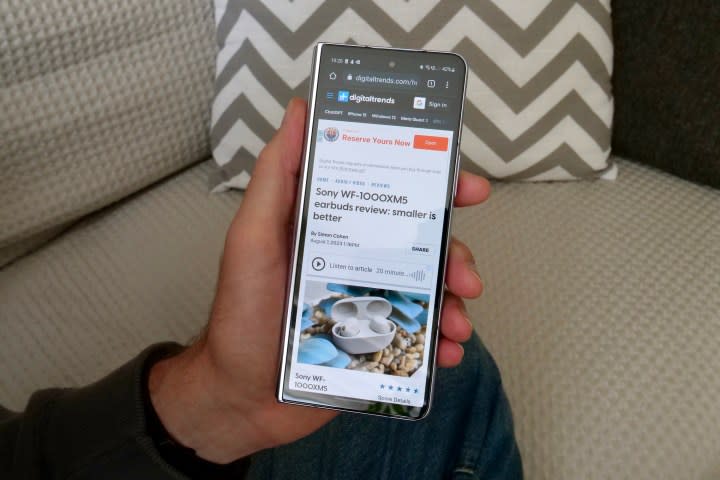
Videos are even worse. The inner display is the obvious home for videos, but every now and again, I just want to quickly watch a video without opening the device up. Unfortunately, the narrow aspect ratio smushes videos down significantly, with vertical space being at a serious premium when the Z Fold 5 is rotated sideways. You can watch videos this way, but every time I try, it just leaves me feeling like I’m watching it on someone else’s phone. From across a street. It’s really bad.
As I said, it’s no deal breaker, but it is very annoying. Use the outer screen for anything other than some basic scrolling or chatting, and you’ll find it lacking. And that’s especially galling because it’s the display I wager people use most of the time.
The Z Fold is a great foldable, but it needs to be a great smartphone too
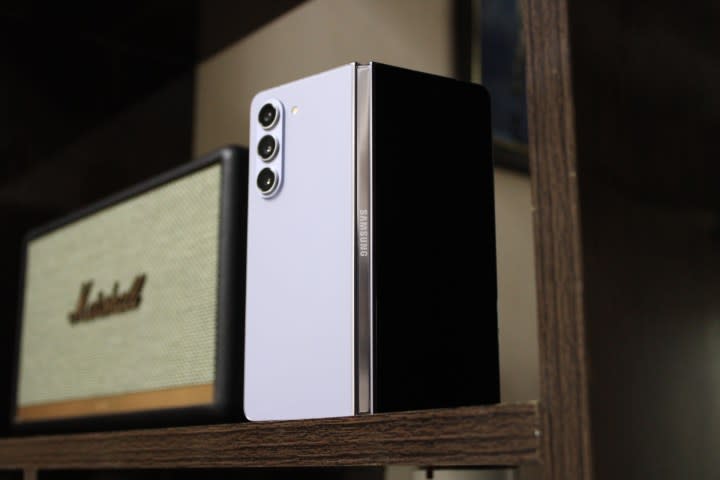
My time with the Galaxy Z Fold 5 has shown me Samsung knows how to make an excellent foldable smartphone. But the Z Fold is a phone of two halves, and really, it was only the folding screen that excelled. Most of the time I spent using the outer display felt like a compromise. It wasn’t a premium experience in its own right; it felt like Samsung saying, “I guess, if you really must.”
The outer display feels like a vehicle for getting you to the inner screen, and that’s reflected in the software. Open the phone up, and it’ll teleport the same app you were looking at onto the inner display as if by magic. But it doesn’t work the other way without digging into the settings app, and that’s close enough to an admission that Samsung doesn’t really expect people to want to go from a large screen to a little one. The outer display just isn’t as important as the inner, but it should be, because it’s the screen people are going to use most of the time.
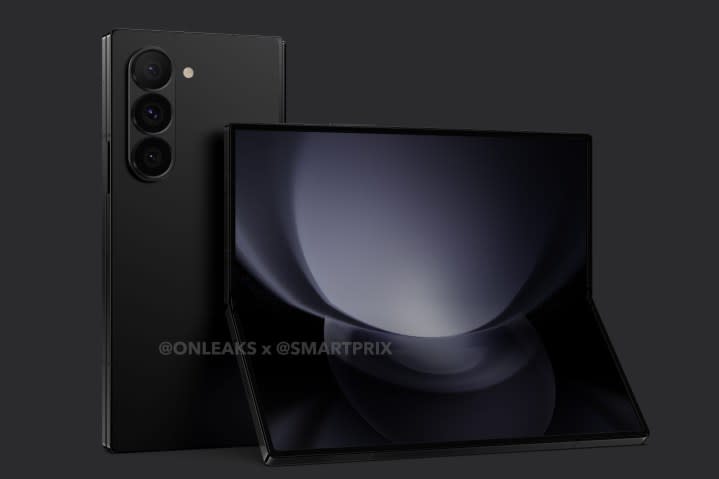
Thankfully, a brighter future is on the horizon. Rumors say the Samsung Galaxy Z Fold 6 will be shorter and wider and will change the aspect ratio of the outer display to a far more useable 20:9. This is the same aspect ratio as the Google Pixel 8 Pro and would make the outer display a much more feasible prospect — and heck, a pretty formidable smartphone in its own right.
And really, that’s the direction Samsung needs to move in.

